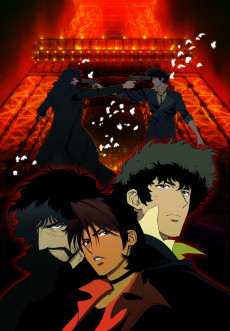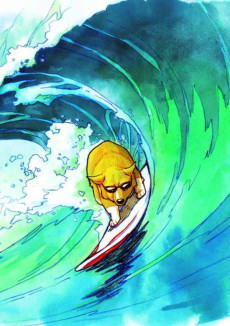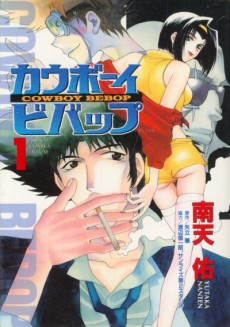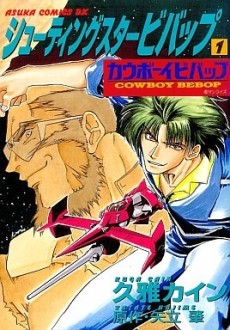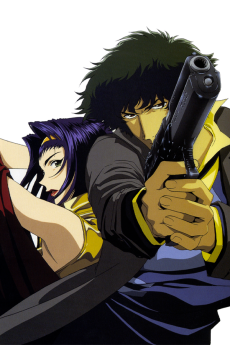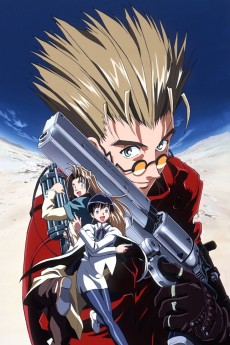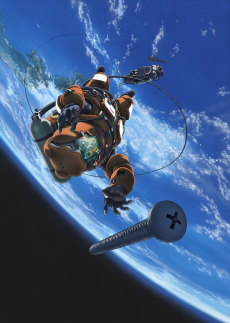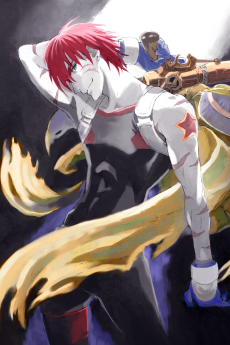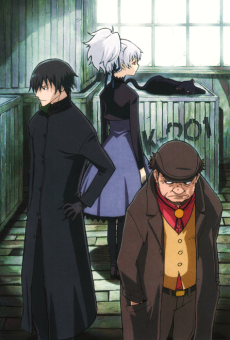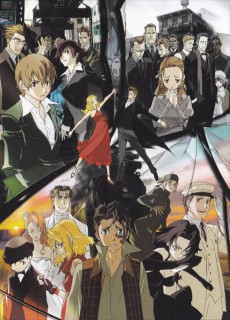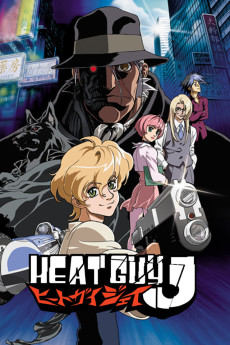COWBOY BEBOP
STATUS
COMPLETE
EPISODES
26
RELEASE
April 24, 1999
LENGTH
24 min
DESCRIPTION
Enter a world in the distant future, where Bounty Hunters roam the solar system. Spike and Jet, bounty hunting partners, set out on journeys in an ever struggling effort to win bounty rewards to survive.
While traveling, they meet up with other very interesting people. Could Faye, the beautiful and ridiculously poor gambler, Edward, the computer genius, and Ein, the engineered dog be a good addition to the group?
CAST
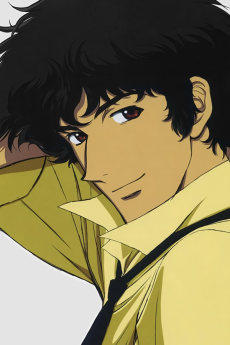
Spike Spiegel
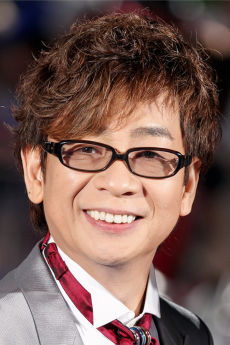
Kouichi Yamadera
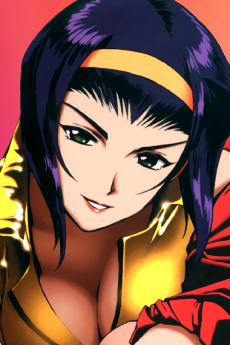
Faye Valentine

Megumi Hayashibara
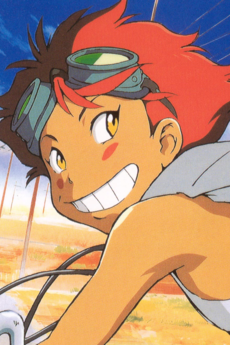
Edward Wong Hau Pepelu Tivrusky IV
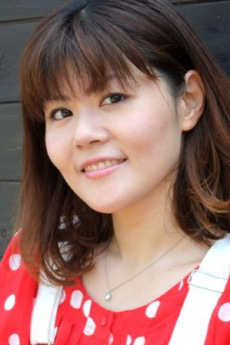
Aoi Tada
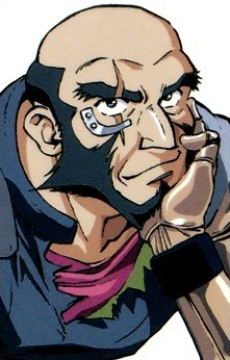
Jet Black

Unshou Ishizuka

Ein

Kouichi Yamadera
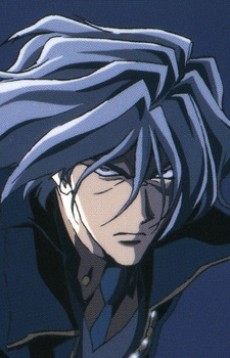
Vicious
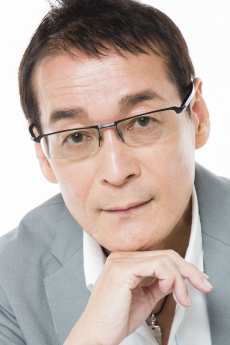
Norio Wakamoto
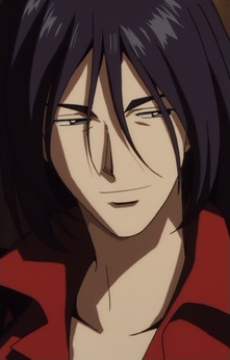
Grencia Mars Elijah Guo Eckener

Kenyuu Horiuchi
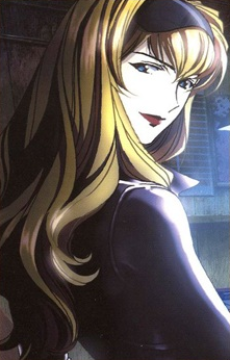
Julia

Gara Takashima
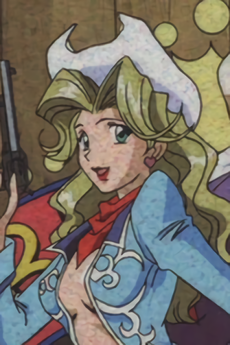
Judy

Miki Nagasawa
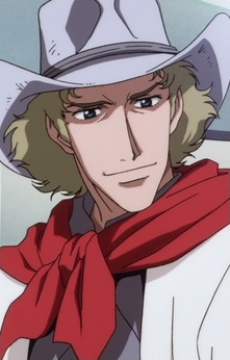
Andy Von de Oniyate
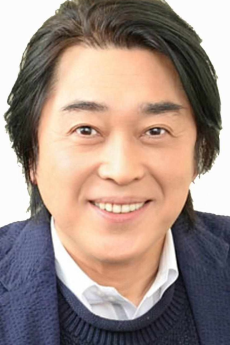
Masashi Ebara
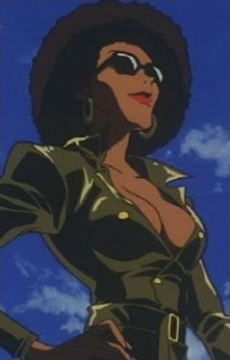
Coffee

Atsuko Tanaka
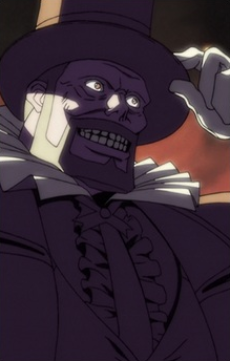
Tongpu
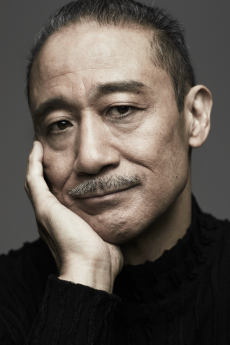
Banjou Ginga
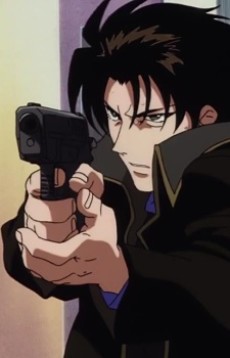
Shin
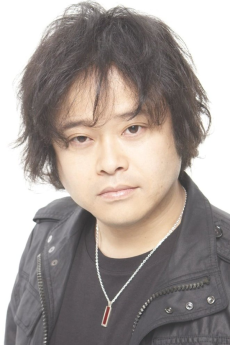
Nobuyuki Hiyama
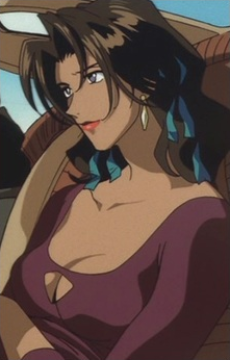
Katerina Solensan

Yurika Hino
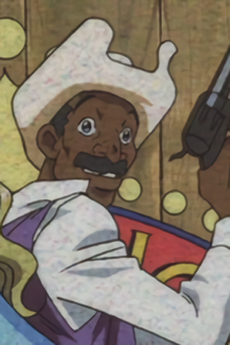
Punch

Tsutomu Tareki
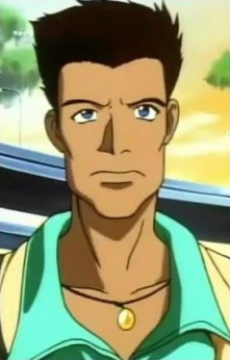
Roco Bonnaro

Ryuusei Nakao
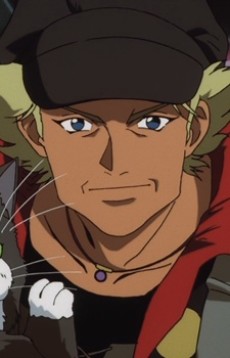
Victoria Terpsichore
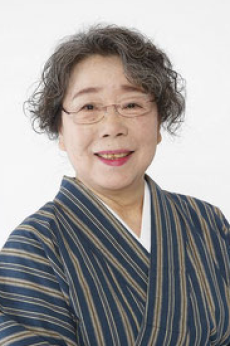
Tomie Kataoka
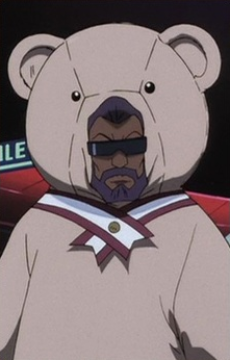
Teddy Bomber
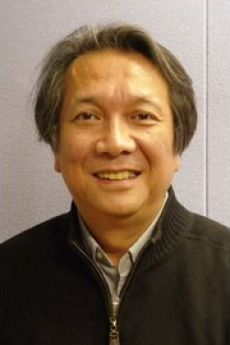
Takaya Hashi
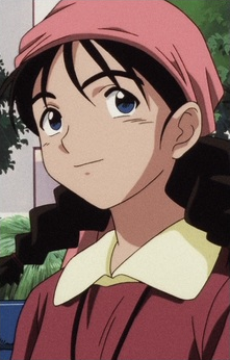
Meifa Puzi

Arisa Ogasawara
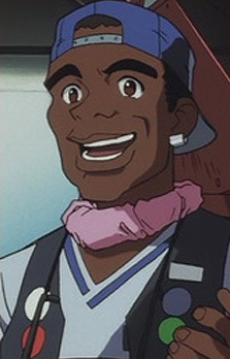
Miles

Yoku Shioya
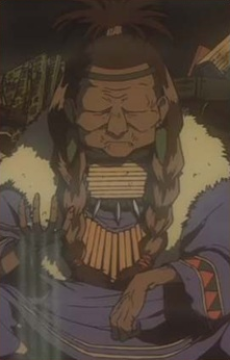
Bull
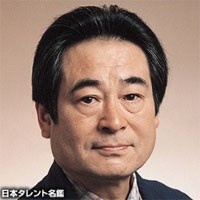
Takehiro Koyama

MPU
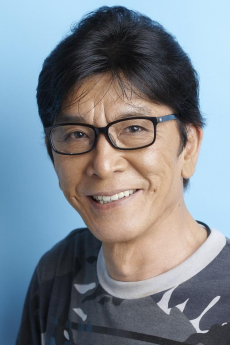
Jouji Nakata
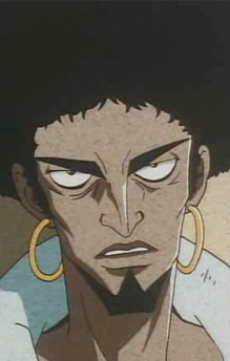
Abdul Hakim

Ryuuzaburou Ootomo
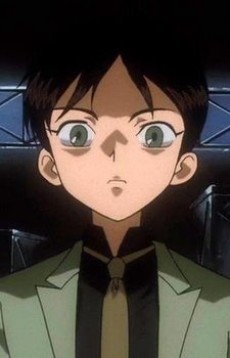
Wen

Yumi Touma

Appledelhi Siniz Hesap Lütfen
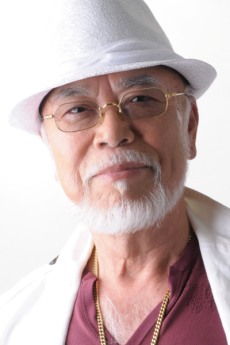
Kenji Utsumi
EPISODES
Dubbed
RELATED TO COWBOY BEBOP
REVIEWS

Giovanni
100/100Cowboy Bebop is a smash-hit jam sessionContinue on AniListCritic's Log: Earthdate - March 12, 2012. Review #1: Cowboy Bebop.
It is the year 2071 and Mars has become the central hub of human civilization ever since a hyperspace experiment on the moon failed and made Earth uninhabitable. The entire Solar System has been accessible thanks to reliable hyperspace gates and crime syndicates have exerted their power and influence over the government and the ISSP (Inter-Solar System-Police). As a result, The ISSP has put in a bounty system similar to The Old West has been included to deal with fugitives, terrorists and other criminals. The bounty hunters are usually called "Cowboys". Bounty hunters Spike Spiegel and Jet Black are flying around space and trying to catch their bounty.
That is the premise of Cowboy Bebop. This is where I start to get technical, Cowboy Bebop does not have much of a main storyline (except for episodes like Ballad of Fallen Angels, the Two-part episode Jupiter Jazz and the two part finale The Real Folk Blues), and those 5 episodes are what you could call "plot" episodes, while the remaining 21 are standalone episodes. With that said, those episodes are not even considered filler. Some of the ideas in these standalone really stand out impressively. Here are some examples: Sympathy for the Devil, Waltz for Venus, Ganymede Elegy, etc., etc...
If there is a blinding aspect, it is the animation. For 1998, the animation was pretty good back then and still looks good today. Some episodes have some cool animation effects as well. Sunrise is the animation studio behind Cowboy Bebop and that might not be saying much, however there is one apparent note about this show, apparently Cowboy Bebop's success led to 3 staff members from Sunrise that co-founded the studio that we know today as Studio Bones. In other words, animes like RahXephon, Wolf's Rain, Eureka Seven, Darker than BLACK, Soul Eater, and both Fullmetal Alchemist animes were apparently made possible due to Bebop's success. The action scenes are well animated, and the visuals are even breathtaking at times.
If there are any anime purists out there that have not seen Cowboy Bebop yet, consider this recommendation an exception, the English dub is very good and hardly flawed. Steven Jay Blum gives Spike a good badass tone to his character, Wendee Lee sounds both sexy and sensitive as Faye, Beau Billingslea has a cool father-like tone as Jet, and Melissa Fahn is charmingly silly as Edward. The dub can be considered better than the original Japanese version of the show, and I have known some purists that mention that Cowboy Bebop's dub was very good. I personally love the dub, it was spot-on and all the voices matched. So, what do I think of the subtitled version? Answer: I find it Underrated compared to the dub. The voice cast of the subtitled version had some well-known voice actors such as Kouichi Yamadera, Megumi Hayashibara, Unsho Ishizuka, and even Norio Wakamoto is in the subbed version. There is nothing wrong with the subtitled version; it may be a bit overshadowed by the dubbed Version
If there is an aspect that struck all the chords right is the soundtrack which is by Yoko Kanno. Some people consider Bebop's soundtrack to be her best. There is one fact about the soundtrack is that Kanno-san formed a band known as The Seatbelts which includes over 70 musicians which resided in Japan, New York, and Paris. I consider it impressive. If you try listening to the soundtrack without the show, it may feel like you're listening to an album rather than a soundtrack. The soundtrack really made a permanent impression on me. My personal favorite moment that involved the soundtrack was the two songs used in the cathedral scene, which were Rain and Green Bird. Hell, the opening theme kicks so much ass, and The Real Folk Blues is a good closing theme. The soundtrack is... How would Ash Williams put it?
What really makes the show impressive is that some scenes have music playing and not have much dialogue in it. This is somewhat of a symbolic example that silence can indeed be golden. This is Kanno-san’s most famous and critically acclaimed soundtrack. Otakus mostly rejoice when Kanno –san is involved in musical compositions ever since she finished her work on Cowboy Bebop. She is mostly a fan favorite in the anime fan base when it comes to the music department and that should come as no surprise. She’s that popular and talented. I do appreciate the work she has done up to this very day.
The characters are also great. Spike is shown as a rogue badass with a past catching up to him. Jet appears to be a cool guy who happens to be the Captain of the Bebop. Faye is a con-woman and an interesting character even though she is kind of rude. Ein is adorable, and Edward is a silly random character that has a positive outlook in life. I think she was an awesome character for comic relief in the show. Some minor characters were also interesting. There is a common theme that runs through all of the characters and that is the pasts of these characters. It's definitely an overused trope but I think the past is something we all quite can't forget which doesn't make this trope clichéd, it's just a common one that is almost always effective.
Cowboy Bebop claims to be a genre unto itself. I am not sure how to give a clear analogy on that, but it has interesting themes that are unique to the show. There are some homages and send ups to famous movies in this show. This is a show that knew how to treat adults and people who like movies, music, Science Fiction, Western and so forth. Shinichiro Watanabe really nailed the direction of this anime because he always liked to mix up different opposing styles to make something completely new and unordinary. Cowboy Bebop has elements of Western, Space Opera, Film Noir, Martial Arts, and Jazz music. All these elements blended extremely well and this was a very unique anime at the time and I can understand why this anime was so revolutionary at the time.
Since the popularity of Cowboy Bebop soared past through the stars, is it even fair to say that this show is overrated? It is considered an influential anime and I see why, a lot of people have universally praised the hell out of this show. The stories, animation, characters, music, and style are blended in so well that it almost makes it hard to see animes of this caliber.
If there is a drawback, I could say that this show could have gone a bit longer, and on a personal note, Boogie Woogie Feng Shui was the only episode I did not like too much. If you like it, that's fine.
If you stick to the series long enough, I guarantee you'll like the ending. There are a lot of people that see the ending as one of the most fitting endings to an anime and it really ends with a bang. I'm dead serious, if you haven't seen this series then do yourself a favor and watch the damn show, it will not disappoint you unless you are extremely picky.
Cowboy Bebop is available by Bandai Entertainment, and even though Bandai Entertainment no longer licenses anime, they mentioned that they will keep their current catalog, so apparently there's nothing to worry about this anime being out of print in the US (I hope). The manga adaptation Cowboy Bebop: Shooting Star written by Hajime Yatate and illustrated by Cain Kuga and another manga adaptation of Cowboy Bebop also written by Hajime Yatate and illustrated by Yutaka Nanten were available by Tokyopop and It is possible that those two manga adaptations are out of print. Cowboy Bebop the Movie is available by Sony Pictures and I will review it next.
*Update since 2014: It is now available by Funimation
With that said, Cowboy Bebop is a smash hit jam-session that has become a genre unto itself; it has thrills, action, humor, and most of all fun. It is a hard one not to like. However, Not only anime fans like this show, some people that don't watch anime much or even anime-haters admit this show is exceptional and they even liked the show. This show has an American influence and it appeals to viewers that like anime, sci-fi, action flicks, and westerns. At the time I am posting this, this anime is still airing on Cartoon Network's Adult Swim block since 2001. The constant re-runs and the fan base have turned this anime to a cult classic (metaphorically speaking, it has a devoted fan base... nothing to do with religious cults or something like that; it's a play on words). It may not be everyone's cup of tea but it is definitely worth trying. It's an anime I sometimes quote as well as some others. Some will say that this is the greatest anime ever made, but that may be stretching it too much, but I will agree in calling it a revolutionary anime and a fun anime at that. it is truly a gem.
I give Cowboy Bebop a 10 out of 10 (It is a MASTERPIECE!)
Feel free to comment below and until then... Stay gold, Bang!

ToeBeans
100/100Review of Cowboy BebopContinue on AniListCowboy Bebop Review I know it first aired back in 1998, but I just finished watching Cowboy Bebop recently. I'm not going to lie, I consistently was seeing it on lists of the best anime of all time, and I was really doubtful going in, but now that I've watched it I know why Cowboy Bebop is so highly acclaimed. It's just good. It's so good. If someone asked me what my favorite anime ever was I wouldn't hesitate to say Cowboy Bebop. If you haven't seen it you should. If you have seen it you should watch it again, without a doubt it is a wonderful anime.
If you haven't viewed the pleasure that is Cowboy Bebop it is set in the year 2071 and follows the lives of bounty hunters traveling on their spaceship, the Bebop. There is definitely overarching stories and themes, but generally you don't need to remember what the previous episode was about to understand the one you're on. Similar to something like a TV crime drama, most episodes feature a criminal that this bounty hunter crew is going after, although the show is so much more than that.
Cowboy Bebop contains these overarching themes of things like loneliness and one's relationship with the past. The characters have subtle and realistic relationships with each other and themselves, everyone has an involved backstory and you just automatically fall in love with all of them. We all have main characters that we dislike, you'll love all of the main four characters in Cowboy Bebop.
Can I just talk about the music for a second? For some anime I skip the opening theme sometimes, even if I like it. When you're binge watching an anime sometimes you just get tired of hearing the same opening song over and over. That never happened to me with Cowboy Bebop. What a great opening sequence, and what a great way to start off every episode. And then, the jazzy, funky, occasionally bluesy music featured in mostly every episode. Ahhhhhhh. I loved every piece of music that was played in this show, it fit so perfectly with the story.
Also the art. Cowboy Bebop is without a doubt an old anime, and when I watched the first episode and saw Spike's hair for the first time, I will say that I was put off. By the third episode I was over it, I loved the art style, so if you are picky about things like that like I sometimes am, don't worry about it, the sheer greatness of Cowboy Bebop will overcome any doubts you have about the art style.
The anime is somewhat of a comedy, but it did make me cry. Beware episodes 24 and 26, they were extremely sad for me. (Although like, everything makes me cry and get emotional.) And I would recommend watching the last three episodes in one fell swoop, as with many anime.
I'd just like to reiterate that you will not be disappointed with Cowboy Bebop, it doesn't matter if you think that you don't like action anime or jazz music, or older anime art styles. Cowboy Bebop is for everyone and I guarantee you will enjoy it.
See you space cowboy...

TheRealKyuubey
100/100Okay, 3, 2, 1 let's jamContinue on AniList-Contains some spoilers
The year is 2071. Humanity has long since expanded into space, with civilization taking hold in various ways on a large selection of the different rocky bodies throughout the solar system. Luckily, we were already in the middle of this process when a hyperspace gateway near the Earth exploded, leaving the planet in ruins and virtually uninhabitable. It’s been fifty years since then, but we can still feel the effect of the disaster. Our colonies range from big, busy cities to smaller, less affluent townships that you’d swear were taken right out of the old west. Interspace travel means nothing to most folk, who were born and raised and eventually expired on the same planet, hell, maybe even in the same town. Sure, those who chose the life of a transportation or delivery pilot may see a couple of different planets, and those rich enough to travel may have seen a few different sunrises, but if you’ve been everywhere, seen every shade of civilization, felt the grass and dirt of multiple planets beneath your feet, then you’re either a criminal… Or a Bounty Hunter.
Yeah, it turns out that with so much ground to cover, the central government can’t be bothered to uphold the law in every society, nor to keep up with wanted criminals who could be hiding out on any number of worlds. Thus, we’ve seen the rise of the registered bounty hunters, people who’ve taken on the job of tracking down and apprehending those with a high enough price on their head and delivering them to the authorities. It’s a job that offers you freedom, excitement, and the right to be your own boss, provided you’re successful enough to keep food on the table. Basically, it’s a job that appeals to those who would otherwise probably be outlaws themselves, real rough-and-tumble characters who just don’t fit into normal society. This description couldn’t possibly fit anybody more than the crew of the Bebop, a moderately sized vessel owned by a retired detective, that houses an ex-gangster, a femme fatale with a gambling problem, a psychotic child prodigy, oh, and also a dog. They may sound like a crew of rejects and shady characters, but with these cowboys on your tail, you might not even live to see prison.

Cowboy Bebop was produced by Studio Sunrise, a company that’s been churning out anime since the seventies, and is still just as prolific today, with some of their more recent hits including Code Geass, Love Live, and the entire Gundam catalog. Bebop was one of their last projects in the nineties, but there are a few other notable benchmarks it holds. First of all, Bebop was the last project that several people working for the company would make before they parted ways, and formed their own studio, the incredibly popular and well-respected Studio Bones. I’m assuming this split was an amicable one, because they were able to collaborate with their former parent company to make the Cowboy Bebop movie only a few years later. So yeah, the legendary production company that began in the 2ooo’s and is able to brag about producing both versions of Fullmetal Alchemist, Soul Eater, Ouran High School host Club and Space Dandy, to name a few, and it’s greatest precursor was Bebop.
And the other benchmark? Cowboy Bebop was one of the final anime to be animated using hand-drawn cells rather than digital drawings. You would think this would be an indication of lacking visual quality, as the last efforts of one style before another takes over are usually somewhat pathetic… Just look at disco… But Cowboy Bebop is a glaring exception to that rule. Not only is it one of the best looking anime of the nineties, it holds up today as one of the best looking anime of all time. Yeah, when compared to offerings from today’s market, Bebop definitely has a very retro feel to it, but since the series was originally designed to be retro, that just makes the aesthetic all the more timeless. The animation is unbelievably fluid, with action scenes that never have to break frames to look impressive, and space battles epic enough to warrant a comparison to early Star Wars. Even when the action does slow down, and the camera does linger on a shot, the artwork is beautiful enough… And the cinematography is smart enough… That you’ll never complain about what you’re seeing.
The character designs are diverse, but human enough that everyone you meet… Aside from perhaps Ed and a certain balloon-like villain… Looks like someone that could easily be translated into real life, at least in terms of anatomy and facial structure. Their outfits are set to color palettes and styles that match their personalities while still remaining pleasing to the eye, and the backgrounds throughout are highly detailed. Episodes that take place in a western background are bright and welcoming, despite being broken down, dirty and weathered with time. Episodes with a more noir feel will take place in a tighter and darker environment, more shadowy and dangerous. Outer space is portrayed as expansive and empty, even when it’s filled with stars and debris. The use of color saturation and shading easily sells the tone and genre of any episode, and if you’re watching the newly released blu-ray version of the series, all of the show’s beauty is cranked up to eleven. And it’s not just the art style that enhances Bebop’s visual quality.
I feel like the best way to describe the music in this series would be to inform you that the musical composer of the series, Yoko Kanno, was also the inspiration for the personality and mannerisms of the character Ed, so try to imagine the kind of musical score that a film noir space western would have if it came from a wild, free-spirited genius with no respect for convention. Translation, it’s spectacular, possibly one of the best anime scores in the history of the medium. The score leans heavily towards jazz and the blues, and while the instruments that Kanno’s band The Seatbelts has available are diverse, there’s an intense focus on trombones and saxophones, which in my opinion aren’t used enough in anime. It fits perfectly in Cowboy Bebop, as the aesthetic demands a funky sounding soundtrack, but the stuff they didn’t do themselves… And thus the music that breaks from the series style… Are just as good. There’s a Steve Conte song called “Call me call me,” in one of the last episodes, that actually makes me cry, both in and out of context.
The most famous musical number from this series is probably Green Bird by Gabriela Robin, which is actually a false name for Yoko Kanno herself, which beautifully accompanies what little glimpses at Spike’s backstory we’re actually allowed to see. A certain western sounding tune named Go Go Cactus Man is also noteworthy for heralding the appearance of a literal cowboy, and amusingly enough, Spike himself reacts to this tune when it’s played. Outside of the score, the sound design is also smartly used, with smaller unreleased musical pieces hyping up the tension and suspense of episodes like Toys in the Attic, but all of that pales in comparison to the show’s opening and ending themes. Both are iconic in their own right, with Tank serving as the funky, undeniably catchy pump-up for some space-faring adventures, and the closing theme The Real Folk Blues serving as the power anthem that feels just right as the send-off to each episode, whether it was funny, serious or downright tragic.
The English dub, as I’ve said before, has become something of a measuring stick, to which all other anime dubs must compare themselves to. That’s not to say I think it’s the best dub of all time… There are still three that I think have surpassed it… But there are plenty of fans and critics who will make that claim, and it’s completely understandable why. The dub was directed by Mary Elizabeth Mcglynn, one of the most respected names in the dubbing industry, and for good reason. She also played several small roles in the cast, including the mysterious Julia and one of the more memorable villains, environmental extremist Twinkle Maria Murdock. Her adaptive script is accurate and on-point, despite slight changes to appeal to a western audiences, and I have to point this out, there are very rare occurrences where an actor will slip up and fail to match the character’s lip flaps. This barely ever happens, however, so it’s forgivable enough.
In terms of acting, all four of the main characters have become the most iconic roles of their respective actors. Steve Blum has been considered a legend in the industry thanks to his turn as Spike Spiegel, a laid back and lethargic louse who cares for nothing other than his next paycheck, except for those rare moments that he’s made to care, either due to a resurgence of his past life or due to a fleeting chance at bringing some genuine good into the world. Beau Billingslea is a highly successful man in both his personal and professional lives, and he’s also one of the only well-known black voice actors in the anime dubbing industry, thanks in no small part to his performance of Jet Black, a former detective and the cool, mature voice of reason of the Bebop crew. Wendee Lee is a bit of a hit-or-miss actor for me, as the quality of her work seems to fluctuate from project to project, but she’s at her absolute best as Faye Valentine, a character who can be confident and duplicitous one minute but then vulnerable and emotionally raw the next.
Then you have Melissa Fahn, who somehow managed to bring more insanity to the character of Ed than even the original seiyuu Aoi Tada. Her crazy ramblings also include random tangents in Japanese, which she fires off smoothly. Together, the four of them form a bizarre sort of chemistry that never quite feels like a proper family unit… They feel more like coworkers, tolerating each other and accepting each others’ eccentricities as they strive towards a common goal. That common goal, mind you, is the money to survive, something essential and vital, but also entirely impersonal. There’s no bonding between these characters, no intricate relationships, no changing each other’s paths and arcs… The characters let their guards down and show vulnerabilities, but almost never around each other, and the English cast is just as good at portraying this as the Japanese cast. Add to this the hilarious contributions by James Penrod as the raucous Cowboy Andy and Lia Sargent and Paul St. Pete as the Big Shot TV hosts Punch and Judy, I do highly recommend this dub over it’s original sub.
I’ve always said, when defining what is and isn’t anime, that there really isn’t any set of qualities that can be taken into account consistently. No matter what rule you try to follow, there will always be outrageous exceptions made. The only philosophy that really makes sense is “Anime is made in Japan.” But for the people who actually try to draw a dividing line between anime and cartoons, there are a few arguments I keep hearing about. The first is that there’s an anime style. Big heads, giant tumorous eyes, small noses, exaggerated expressions… And another popular one is that anime is non-episodic, and tells a continuous story through plot progression and cohesive arcs. People will use these arguments as an excuse to call shows like Avatar and RWBY anime, and if you bring up shows like Shin-chan and Panty and Stocking, they’ll argue that those aren’t real anime, and were designed to be more like cartoons.
But then you bring up Cowboy Bebop, a show that doesn’t waste it’s time with stereotypical anime expressions, doesn’t follow any alleged anime style, and for the most part, is episodic and full of filler. It’s heavily adult in it’s presentation, despite the fact that it doesn’t contain any gratuitous content… No giant boobs, no multi-episode fight scenes, no nudity or fanservice outside of a transexual dude and Faye occasionally sunbathing… No beach scenes, no hot springs episodes… Cowboy Bebop isn’t like any other anime, even the ones that have tried to copy it in the 20 years since it’s release. The idea of there being an anime style is quite frankly bullshit, as that’s a seriously reductive viewpoint on the medium, but aren’t the best anime the ones with engaging stories and involved plots? This isn’t even close to the case with Cowboy Bebop, a show that did horribly during it’s initial release in Japan, so why is it considered one of the best anime of all time? Why is it still a mainstay on American TV over a decade later?
Well, there’s actually some backstory on that. When Bebop was initially released, the studio that played it got skittish about how adult it’s content was, and wound up airing it out of order, with several episodes left out entirely. This didn’t exactly build confidence with the audience, who weren’t even allowed to see the two best episodes, Ballad of Fallen Angels and Sympathy for the Devil. Keep in mind, this occurred in a country where that piece of shit Shadow Star was able to air on a Children’s Network. It was later run in it’s entirety on a less popular network named WOWOW, but the trouble it’s first network gave it provided a special kind of challenge for the series when it came to picking up steam. Heh, kinda reminds me of another series I know that got a lot of shit from it’s network, and was aired out of nowhere and treated unfairly by people who didn’t know how to handle it… In fact, you know what? Back up a bit. This show has a lot more in common with Firefly than just it’s initial problems, and I think I can use the comparison to explain why both shows are so immensely popular despite having a short run and a disastrous debut.
There are plenty of similarities between Cowboy Bebop and Firefly, and considering the few things that the latter stole DIRECTLY from Outlaw Star, it wasn’t very likely a coincidence. Both shows feature an old, beaten down spaceship that acts as a surrogate home for a crew of misfits, surviving day to day on whatever jobs they can take in order to keep food on the table and fuel in the tank. The focus is on character more than plot, and most of the cast has extensive backstories that translate to other lives they’ve left behind, but are still haunted by. In both shows, Earth got used up, and humanity colonized the solar system, with no real aliens out there, and the territory is populated with an anachronistic array of settlements that the crew travels to and does business with. Firefly wound up being popular to this day for the same reason that Cowboy Bebop didn’t get popular until it reached the states… Because it’s a story that was designed to appeal to an American audience.
Japanese society has always been deeply rooted in tradition and conformity. It’s true that a lot of it’s art has made valiant efforts to challenge the norm, from Kill La Kill’s blatant attack on said values, and Ikuhara’s work taking every opportunity to question the patriarchy, but for an anime to be about individuals who don’t fit into society making a life for themselves without any attachments outside of their own personal interests, with no real beliefs or values outside of their need to survive, and for this to come out way back in 1997, I find it more surprising that the series EVENTUALLY became big over there. But more to the point, Cowboy Bebop was, perhaps inadvertently, designed to be successful in America, so by ripping it off, Firefly became so popular that over fifteen years later, it has it’s own line of Lootcrate merch. And yet, despite the many similarities, Cowboy Bebop is still superior to Firefly in every conceivable way, and it’s able to be so without having to try nearly as hard as Firefly did.
First off, as much as I love it, Firefly was never that great at drama. Yeah there was danger, and characters would die, but actual emotional conflict? It would pop up in small doses, but never in any engaging way. It also, like MANY series both here and in Japan, used dangling plot threads to keep you watching. There were mysteries to be solved, romantic interests to be resolved, conspiracies to unravel… When shows do this, it can be great, but it still feels like there’s a carrot dangling in front of your face, daring you to run towards it. It goes perhaps without saying that Cowboy Bebop had none of these issues. It never needs to try to grab your attention… You don’t need to worry about what’s going to happen later on in the story, because everything that’s happening is perfectly interesting on it’s own. You don’t just want to see the characters prevail, and overcome each obstacle, preserving the status quo, you want to see them overcome themselves and break the stasis they’ve surrounded themselves with in order to find whatever it is they’ve been missing.
Cowboy Bebop is about four outcasts with nowhere to go, nowhere to call home, and pasts that they can no longer return to. In a sense, they’ve given up anything they once held dear in order to just survive day to day, putting their loved ones, morals and dreams aside because even if there is something for them to go back to, which isn’t always the case, doing so would carry unimaginable consequences, so you wind up having no idea whether you want them to find closure or just move forward. Anybody who’s held a job in order to pay the bills can immediately relate to this, and yet the fact that the crew of the Bebop have taken on even more uncertainty and risk by working a job that lets them hold onto a little bit of freedom by being their own bosses still makes them so easy to idolize. You get episodes of backstory for the entire main cast save for Ed, and these episodes are by far the best of the bunch because of everything they teach us about their past lives and how they wound up in this life, and then you’ll get the one-off episodes that are somehow just as awesome on their own, with so many imaginative and complex ideas that fit perfectly into the Bebop universe. All of these episodes, in their own way, explore the dichotomy of life, death, and the purpose that each serves.
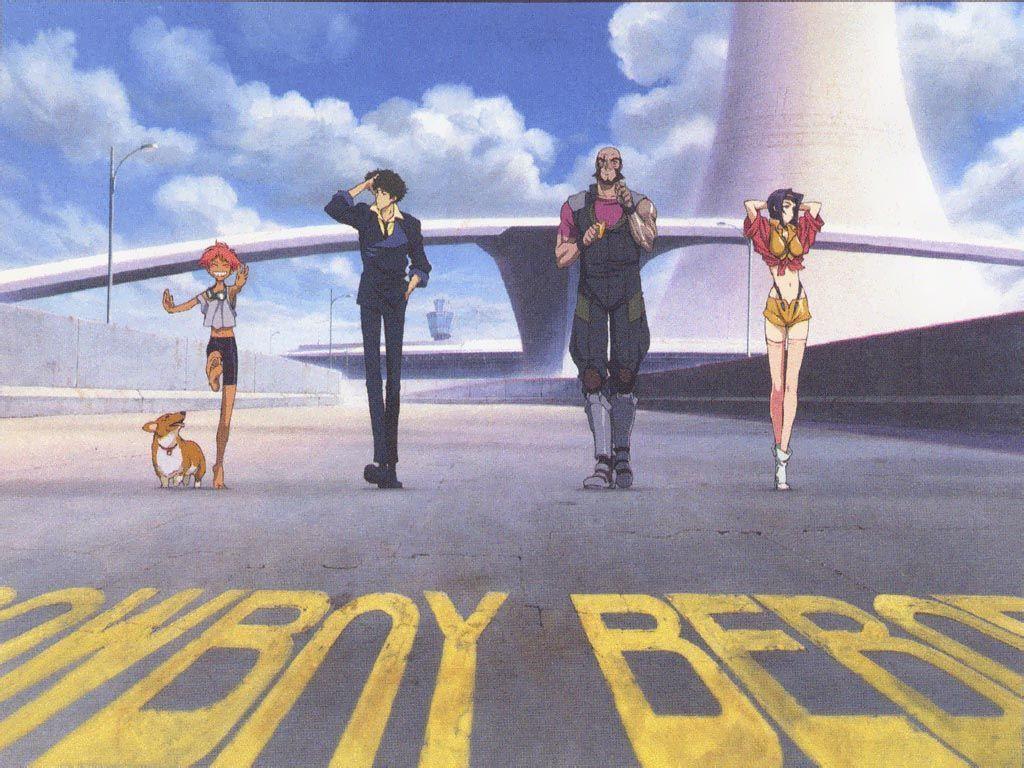
Cowboy Bebop was originally available from Bandai, both in individual cases and in a much more attractive Remix collection set, which was my copy of the series for years until Funimation bought the rights, and released it on Gorram Blu-Ray. I don’t care how much your physical copies of this series mean to you, you need to buy it on Blu-Ray. It’s a lot cheaper than the Amazon Exclusive version, although that one DOES come with a whole slew of bonus goodies. The movie, Knocking on Heaven’s door, is also available pretty cheap at most locations, and it’s also really great. The manga adaptations are also easily available stateside, although you’re best bet is to look online.
Cowboy Bebop is not just an example of how anime can break it’s own rules and still be great, nor is it just an example of how good an anime from the nineties could look. It is also, and perhaps most importantly, an example of how a character driven story doesn’t need to have a plot, especially if it’s written in such a way that the characters ARE the plot. They’re all so likeable and so interesting that there are literally no boring moments throughout the series, because everything that happens involves them or is related to them in some way. I’ve heard some people complain about the crew not landing very many bounties, but I honestly think that’s the whole point. The ship is symbolic of the status quo that so many other shows rely on. As long as they stay there, sheltered from their old lives, they can never succeed, nor can they fail. They can never really live, nor can they die. They can only tread water, surviving. That might sound comfortable for some, but for Spike Spiegel, and ultimately for the philosophy of the series, it’s better to die young than to survive without living. This work, which has become a genre unto itself, is known as Cowboy Bebop, and I give it a 10/10.
SIMILAR ANIMES YOU MAY LIKE
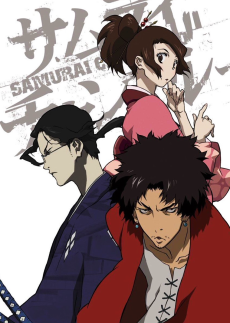 ANIME ActionSamurai Champloo
ANIME ActionSamurai Champloo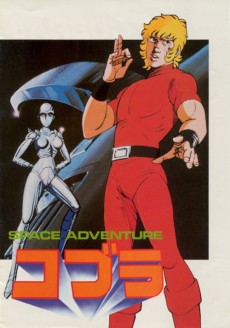 ANIME ActionSpace Cobra
ANIME ActionSpace Cobra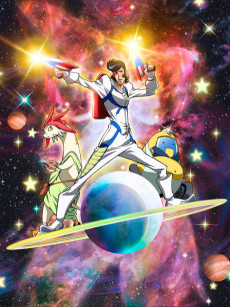 ANIME ComedySpace☆Dandy
ANIME ComedySpace☆Dandy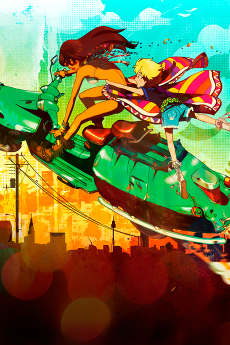 ANIME ActionMichiko to Hatchin
ANIME ActionMichiko to Hatchin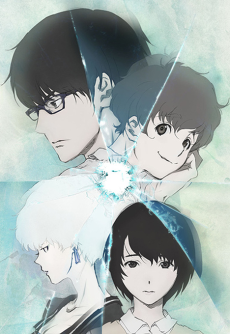 ANIME DramaZankyou no Terror
ANIME DramaZankyou no Terror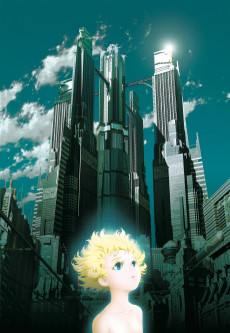 MOVIE AdventureMetropolis
MOVIE AdventureMetropolis
SCORE
- (4.3/5)
TRAILER
MORE INFO
Ended inApril 24, 1999
Main Studio Sunrise
Trending Level 10
Favorited by 24,465 Users


